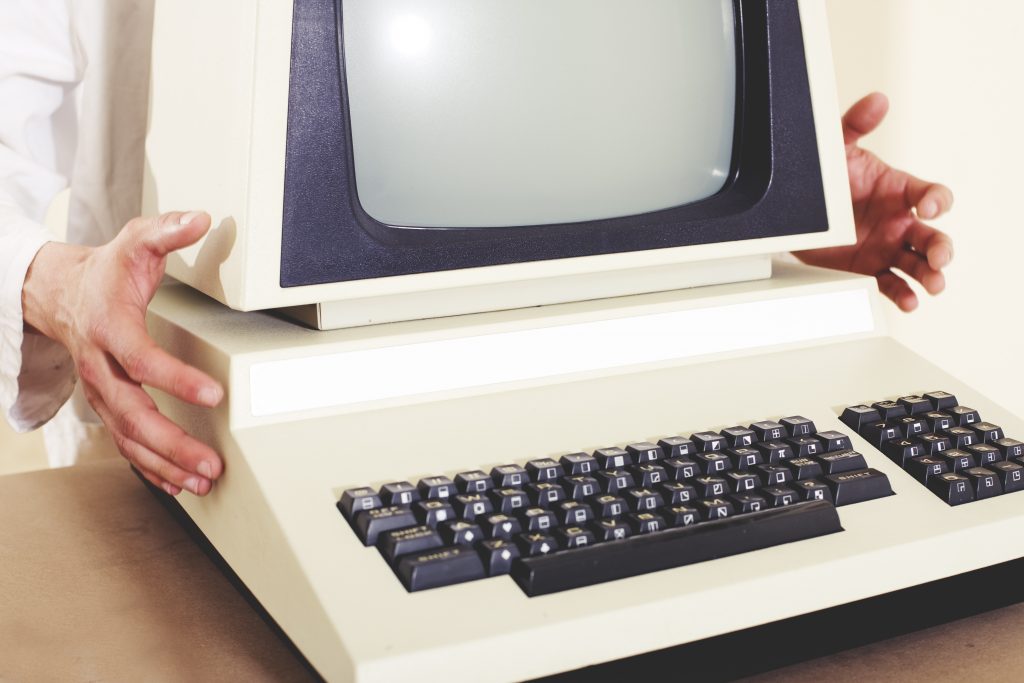
Anyone who has worked in IT for as long as I have knows that exponential changes in technology over the past several decades have forced IT to be agile and find new ways to support users and make tech work for the business. Today, given the often patchworked nature of our environments, monitoring end-user experience is one efficient way for IT to gain insight into how users are faring with enterprise technology and services. With such insight, IT can support users regardless of where and how resources are hosted.
That said, end-user experience often isn’t being used to its fullest potential as an indicator. Why? This lack of focus on end-user experience monitoring (EUEM) is something that dates back to our earlier days in IT. To find the answer, let’s first dive into our IT time machine.
A brief history of IT
I started in IT around 1988 answering the helpdesk phone of an IT services company. Those around in the ‘80s will remember that mobile phones did not exist (personal pagers eventually became the first “mobile” device) and Windows had not yet been invented. These were the days of Disk Operating System and the very first PCs, their only storage being a 5¼” floppy drive that could hold a whopping 360 KB! Screens were usually black and white, or sometimes green, but always power-hungry Cathode Ray Tubes.

Things called Bulletin Board Systems used dial-up modems (a bit like a fax over the telephone line; you were lucky to get 56k bandwidth connections) and were the source of information sharing. The internet had another 10 years to emerge and become commonplace. In the meantime CompuServe BBS dominated the 1990s for IT professionals, part of AOL and Netscape that went on to develop Netscape Communicator, which got trampled on eventually by Microsoft’s Internet Explorer. However Netscape left us with JavaScript and HTML standards still in use today.
In short, end-user experience was not as much of a focus back then because those were the days of uncomplicated and emerging IT. Technology helped with a few niche areas like replacing typewriters with word processors and some basic spreadsheets, but IT’s main objective was to provide technology and keep it functional, not to provide users with a delightful end-user experience. Few people had any idea where we would end up today, with every organisation on the planet totally dependent on technology to operate, trade, communicate, pay employees and simply exist.
The modern-day service challenge
Despite the early days of IT being worlds apart from the frenetic thousand-mile-an-hour and information-saturated world of today, the most significant change above all is end users’ interactions with technology, which have fuelled a newfound focus on end users and the quality of their experience with their environment.
Most mature organisations understand IT is a set of components that aggregate to form a service. They also understand that more than ever, IT is procured as-a-service, predominantly as infrastructure (IaaS) or software (SaaS). This heavy adoption of services tends to delegate the task of delivering a high-quality service to a service provider while still placing ultimate responsibility on in-house IT, making monitoring that much more complex.
Everyone wants a high-quality service. Many try to measure that service and distil ownership, visibility and responsibility to an individual internal or external party to deliver. What usually happens is a focus on technical metrics (such as availability or performance) that are only partially related to an actual user-perceived service level. Usually, if it’s a third-party supplier delivering a service, they get contractually incentivised to focus on a few technical KPIs such as “uptime” without ever really providing an excellent service, the receiver of that service often trapped in that contract for months or years, not getting what they truly require to support and accelerate their business.
Ultimately, IT is there to do something for us, the users of IT. In a business context, IT is there to provide users with the right tools to do their jobs more effectively and to automate common tasks. At an organisational level, IT is there to save money, create profit, and augment the business to become more competitive.
Focusing on end-user experience monitoring helps optimize IT investments
The end-user perspective provides the ultimate vantage point for IT which is why IT teams should place the end-user experience at the core of their IT strategy. It is at the user level where, despite the modern-day service challenge, the whole complexity of data centres, infrastructure, applications, internal and external services converge to deliver a personalized workspace. Therefore, if end-user experience can be analysed and scored, IT can use that score as the ultimate KPI: from baselining performance during desktop transformation projects to triggering service desk alarms tied to low scores.
Now you may be wondering, how do I do this and what about constantly measuring how IT is impacting users’ productivity, good or bad, and truly quantifying an actual service level to a user? If IT is negatively impacting the productivity of users (therefore the business), measuring and quantifying that is one thing, something then must be done to improve that service. Knowing just the what without the why is almost useless. Almost all IT toolsets that exist today will tell you that something is wrong. You think “great I need to fix that”, but without the why or the cause, you are not equipped with the visibility required to action that information.
Lakeside Software has pioneered the perspective that end-user experience is the key to IT. SysTrack, Lakeside’s end-use experience monitoring (EUEM) solution, uniquely measures end-user experience and productivity impact in a way that is truly representative of the user’s actual experience.
Crucially, SysTrack tells you the why – what is the cause of that productivity impact. This makes the quantified user experience actionable, enabling very rapid tactical support response and strategic enterprise improvement programmes alike. Once that actionable insight has been carried out, SysTrack also measures the productivity increase because it is always quantifying, providing the evidence of that improvement.
Looking forward, maintaining visibility into the environment is only going to become more challenging for IT. By placing end-user experience at the core of your IT strategy, you’ll be able to make the best possible decisions for your users regardless of where technology leads us next.
Subscribe to the Lakeside Newsletter
Receive platform tips, release updates, news and more



